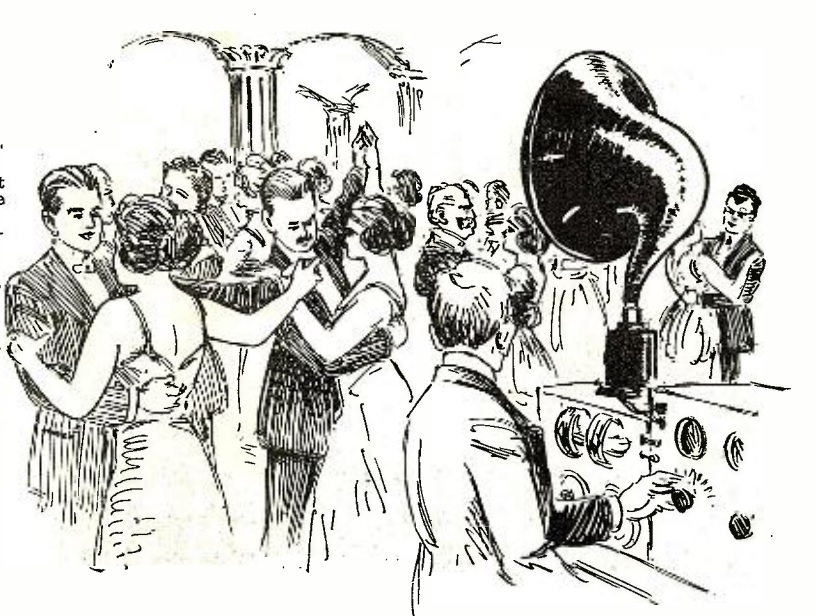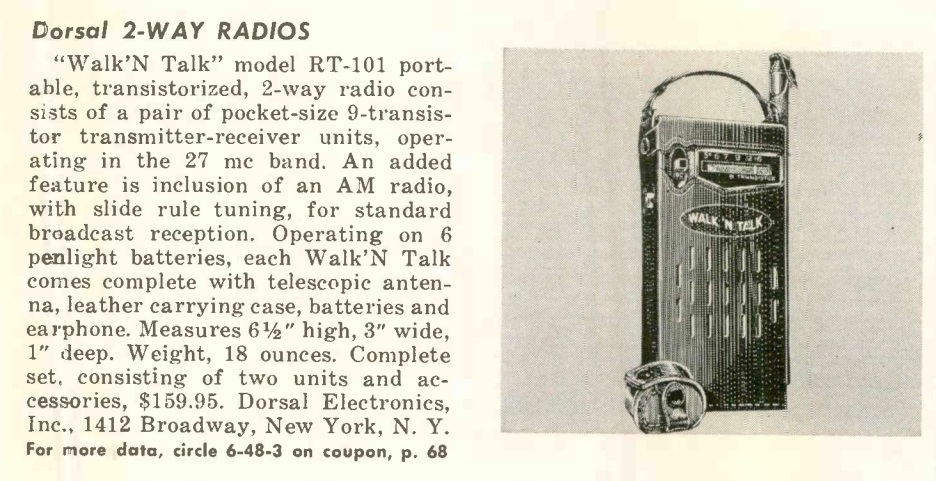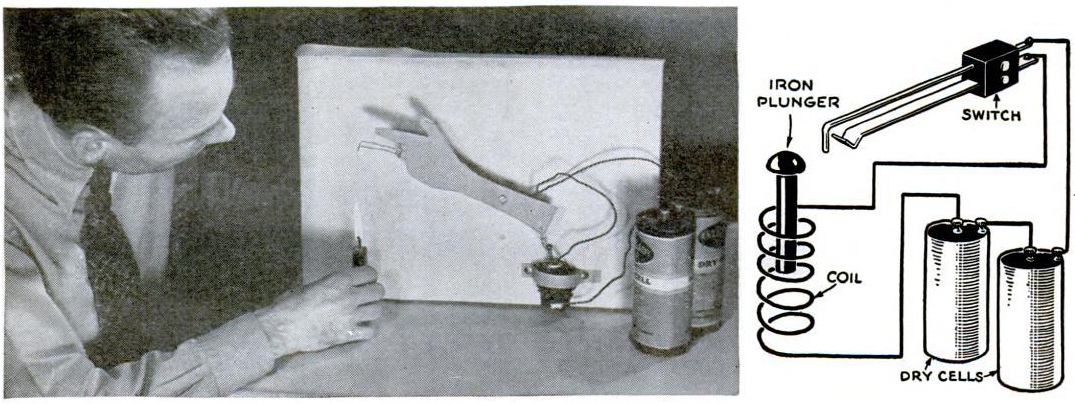 A hundred years ago, these summer tourists were enjoying dance music at some fine hotel, thanks to the entrepreneurial spirit of a young radio enthusiast. This was but one idea shown in an article in the June, 1921, issue of Radio News.
A hundred years ago, these summer tourists were enjoying dance music at some fine hotel, thanks to the entrepreneurial spirit of a young radio enthusiast. This was but one idea shown in an article in the June, 1921, issue of Radio News.
The article started by noting that some young men might be trying to decide whether they should spend their money on a new piece of radio gear, or instead on a nice summer vacation. The solution to the dilemma was to parlay the radio hobby into a free vacation. Stamps were cheap, and it was simply a matter of proposing ideas to resort hotels: In exchange for free room and board, the entrepreneur could provide useful services to the hotel.
One such idea is illustrated above. A dance required music, and that music could come over the radio. In addition to being a source of the dance music, the radio was still a novelty in its own right, and would have a particular allure.
Some hotels might be in remote areas, and the morning papers might not arrive until the afternoon. A young man equipped with a radio set could get the morning headlines to guests before the papers arrived. And the presence of the two-way set could be an important selling feature for a hotel to offer the availability of emergency message sending.
In some cases, the young man could offer radio classes to guests. Also, a young man with a radio set would have numerous networking opportunities. The possibilities were endless!
















